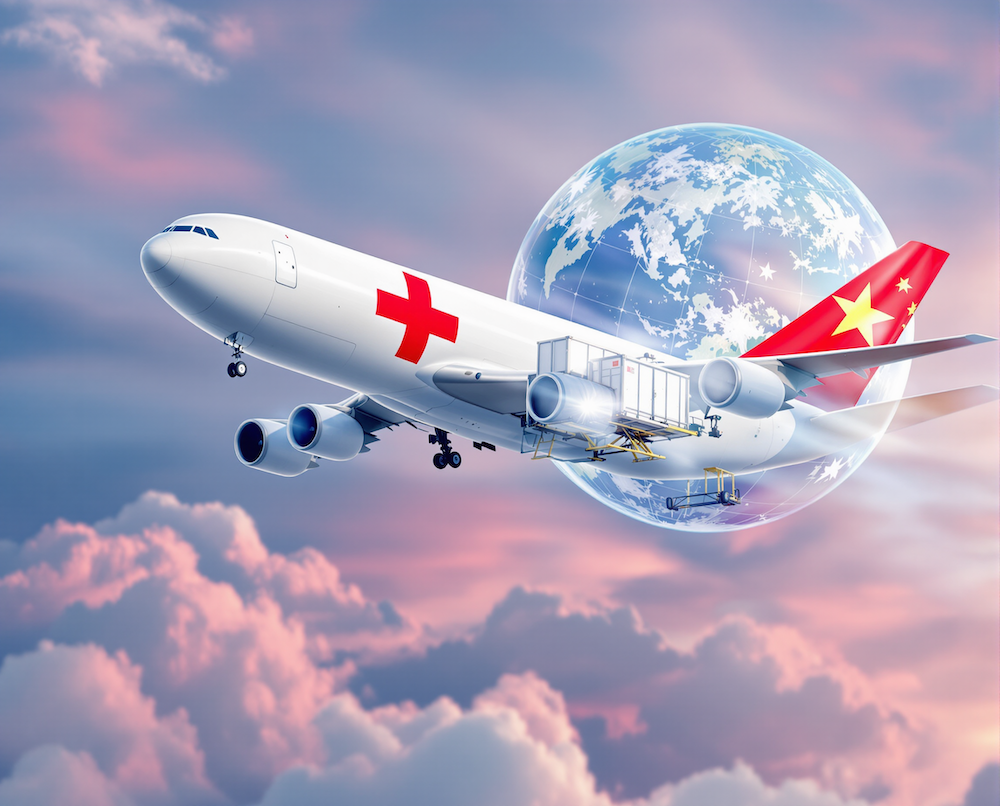
Introduction
Over the past few decades, China has emerged as a significant player in global health, transitioning from being a recipient of international aid to a key contributor to global health solutions. Through diplomatic engagements, health infrastructure development, and pharmaceutical innovations, China has positioned itself as a leader in global health governance. This article explores China’s evolving role in global health, highlighting its contributions through medical diplomacy, the Health Silk Road initiative, innovations in healthcare, and partnerships with international organizations.
Historical Context: From Recipient to Leader
China’s engagement in global health dates back to the early 1960s when it began dispatching medical teams to Africa. The first medical aid mission was sent to Algeria in 1963, marking the beginning of China’s long-term commitment to global health assistance. Since then, China has sent over 25,000 medical professionals to 48 African countries, treating an estimated 200 million patients. These missions were not only humanitarian in nature but also served China’s geopolitical interests by strengthening diplomatic ties with developing nations (CSIS, 2020).
China’s Health Diplomacy in Africa and Beyond
Medical Aid and Infrastructure Development
China’s global health engagement is most prominent in Africa, where it has constructed hospitals, donated medical supplies, and provided training for local healthcare workers. China has built over 130 health facilities across the continent, playing a crucial role in enhancing healthcare infrastructure (Lancet, 2014).
During the Ebola outbreak in West Africa in 2014, China was among the first countries to respond, deploying emergency medical teams, establishing diagnostic laboratories, and sending medical supplies worth over $120 million (RAND, 2022). This proactive response underscored China’s growing influence in global health crisis management.
Similarly, China played a crucial role during the COVID-19 pandemic, supplying vaccines, personal protective equipment (PPE), and ventilators to over 80 countries. The Sinopharm and Sinovac vaccines, developed in China, became vital components of the global fight against COVID-19, particularly in developing nations that struggled to access vaccines from Western pharmaceutical companies (Think Global Health, 2021).
The Role of the Health Silk Road
The Health Silk Road (HSR) is an extension of China’s Belt and Road Initiative (BRI), focusing on strengthening healthcare systems in partner countries through collaboration in medical research, disease control, and the construction of healthcare infrastructure. This initiative aims to foster global health security and improve pandemic preparedness.
China’s efforts under the HSR include:
- The establishment of partnerships with national health agencies for disease surveillance and prevention.
- The expansion of telemedicine services in Africa and Asia, enabling remote diagnosis and treatment.
- Support for vaccine distribution programs in developing nations, especially during the COVID-19 crisis (CSIS, 2021).
The HSR aligns with China’s broader foreign policy goals by promoting soft power and deepening economic and political relationships with partner nations.
China’s Contributions to Global Health Innovation
Pharmaceutical Development and Vaccine Research
China has made significant strides in pharmaceutical research and development (R&D), contributing to the global fight against infectious diseases. Collaborations with institutions like the Bill & Melinda Gates Foundation have facilitated breakthroughs in drug development and vaccine storage technology.
One of the most notable achievements in this collaboration is the Arktek™ vaccine storage device, which can maintain vaccines at stable temperatures for over a month without external power. This innovation is particularly crucial for remote areas in developing countries with limited access to electricity (Gates Foundation, 2023).
Additionally, China has invested heavily in infectious disease research through the Global Health Drug Discovery Institute (GHDDI) in Beijing. This institute focuses on developing new treatments for diseases such as tuberculosis, malaria, and polio, aiming to make them more affordable and accessible worldwide (Gates Foundation, 2022).
China’s Role in Global Health Governance
China has strengthened its engagement with international health organizations, including the World Health Organization (WHO), the Global Fund, and Gavi, the Vaccine Alliance. It has provided funding and technical support for global health programs, especially in the areas of infectious disease control and maternal and child health.
Despite its contributions, China has faced criticism for a lack of transparency, particularly regarding data sharing during global health crises such as the COVID-19 pandemic. Enhancing cooperation with global health institutions and adopting more open policies could further solidify China’s leadership in global health governance.
Challenges and Future Directions
While China has made significant contributions to global health, there are challenges that could hinder its continued leadership in this field:
Transparency and Trust: There have been concerns about data transparency, particularly in disease outbreak reporting. Greater openness in sharing epidemiological data will enhance China’s credibility in global health governance.
Geopolitical Tensions: China’s global health initiatives are sometimes viewed through a geopolitical lens, raising concerns among Western nations about its strategic intentions. Striking a balance between health diplomacy and geopolitical interests will be essential.
Coordination with International Partners: Improved collaboration with WHO and other global health organizations can enhance the effectiveness of China’s health interventions.
Conclusion
China’s role in global health has evolved from being a recipient of aid to a key player in international health diplomacy. Through initiatives such as the Health Silk Road, medical aid programs, and pharmaceutical innovations, China has significantly contributed to strengthening healthcare systems in developing nations. However, addressing concerns related to transparency, geopolitical tensions, and coordination with global health institutions will be critical for sustaining and expanding its leadership in global health.
As China continues to expand its footprint in global health, its ability to foster trust, enhance collaboration, and maintain a balance between diplomatic and humanitarian efforts will determine its long-term impact on global health governance.
References:
- CSIS (2020). “China’s Global Health Engagement and Development.”
- Gates Foundation (2022). “Strengthening Global Health Innovation.”
- Gates Foundation (2023). “Contributing to Global Health and Development.”
- Lancet (2014). “China’s Health Engagement in Africa.”
- RAND (2022). “China’s Global Health Diplomacy.”
- Think Global Health (2021). “China’s Foreign Policy and Global Health Leadership.”
